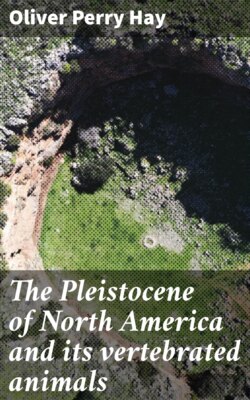Читать книгу The Pleistocene of North America and its vertebrated animals - Oliver Perry Hay - Страница 35
На сайте Литреса книга снята с продажи.
VIRGINIA.
ОглавлениеTable of Contents
15. Accomac County.—In the Annals of the Lyceum of Natural History of New York, volume II, 1828, page 271, Messrs. Mitchill, Smith, and Cooper made a report on a fossil walrus skull found along the Virginia coast somewhere in Accomac County. Only the anterior half of the skull was secured. According to this report, portions of the tusks were preserved, but were much mutilated. There were present also 4 of the grinding teeth. The skull was described as being remarkably hard and heavy and the tusks were almost agatized. The sutures of the skull had mostly closed up; hence the animal was evidently an old one. The specimen bore the marks of having been in salt water, and was said to have been found on the beach.
This is the specimen which DeKay, in 1842 (Zool. of N. Y., pt. I, p. 56, plate XIX, fig. 1), made the type of his Trichechus virginianus. Newberry, in 1873 (Proc. Lyc. Nat. Hist. New York, p. 71), identified the specimen as belonging to the existing Atlantic species. Cope (Proc. Amer. Philos. Soc., vol. XIV, 1874, p. 17) does not mention the presence of tusks. He supposed that there was, at that part of the coast, glacial drift, out of which the skull had been washed. There are, however, no such deposits in that region. This specimen was placed in the collection of the Lyceum of Natural History of New York, but according to Rhoads, was afterward destroyed in a fire.
On examination of G. B. Shattuck’s work on the Pleistocene of Maryland (Maryland Geol. Surv., Pliocene and Pleistocene volume, p. 95, plate I), it seems that the coast of Virginia in Accomac County is occupied by the Talbot formation. This, according to his theory, corresponds, at least the part nearest the coast, with the Cape May formation of New Jersey. Hence we might conclude that the walrus skull in question had become buried, probably during the Wisconsin glacial stage. The present writer regards the principal part of the Talbot terrace as being much older.
Messrs. W. B. Clark and B. L. Miller (Virginia Geol. Surv. Bull., No. IV, p. 187) recognize the presence of the Talbot formation in Accomac County, where it seems to reach a thickness of 100 feet; but the authors add that part of this may belong to earlier Pleistocene formations.
